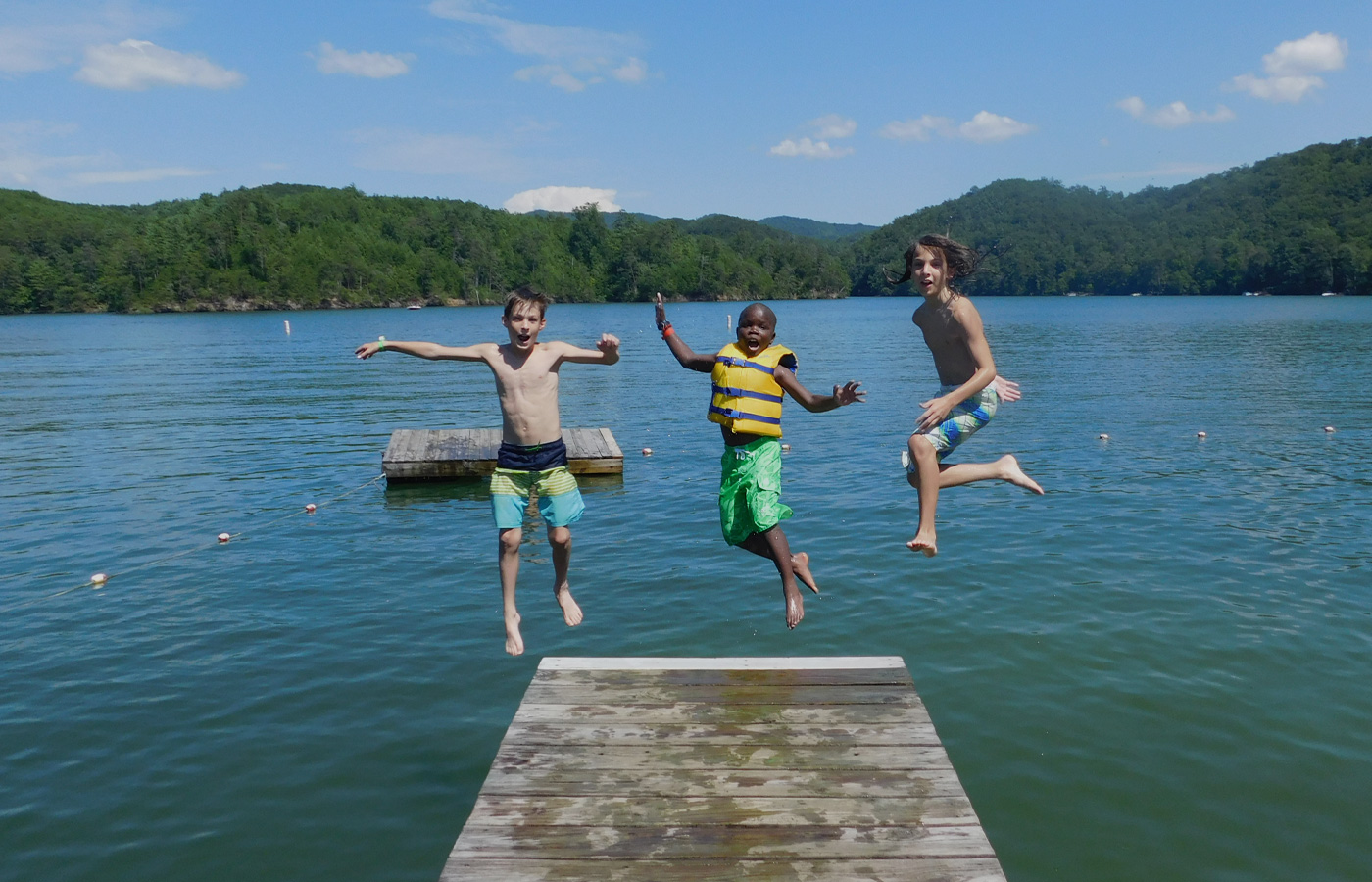A Case Study on YMCA Camp Websites.
I recently had the opportunity to build a website for YMCA Camp Ocoee (ymcacampocoee.org), located in beautiful Ocoee, TN. Building this website brought up some interesting questions, topics and research. If you run a YMCA Camp, or any other sort of overnight camp event, I’d love to hear your feedback on the thoughts below.
To be clear, this is an article that will look into the specifics of the Camp Ocoee project, as well as address a few obstacles and struggles that camping websites might find online. This is not exhaustive or overreaching in any way, as each camp, website and staff will have their own questions and problems to solve. However, hopefully some of the information below you’ll find useful in your situation.
A Brand New Website … but why?
The first question that we had to ask – and maybe you’ve asked as well – is probably the most important question to answer before any other decisions are made. “Does our camp really need an entirely separate website?”
In our case, YMCA Camp Ocoee already had their own site separate from their parent association, the YMCA of Metropolitan Chattanooga. So the decision was already made to split it out. But that question still had to be answered for them, and maybe still does for you. The answer can be quite simple. With a camp as involved and well-rounded as Camp Ocoee, there was simply too much going on to relegate everything to one page under a “/camp” somewhere. There’s registration, programs and electives, activities (with lots of great photos & videos), canoes and kayaks and rock walls, adventure programs, cabin rentals, medical forms … it can be information overload. Especially, if you try and cram it into one page. Now, if you have a small camp – maybe a day camp or single activity related – then you don’t have to consider the “information bloat” issue. But for many YMCA camps, there’s just too much involved to treat it like a yoga class on their association website.
And here’s an important question: how do parents feel about scarce information on a camp that will host their children? Not great, that’s how! If you’re providing them a place to send their kids, it’s best to over deliver on the information. This is where photos, videos, forms and visuals are key. The YMCA Camp Ocoee website delivers in this area:
Create an Experience with Your Visuals & Messaging.
Ignore the rogue mouse pointer. *facepalm*
Right out of the gate, this is the hero banner of their front page. It’s not just about “having cool video” or being “multimedia driven” – even though I think it accomplishes both of those things. It’s about how those video clips make you feel. That’s right, we’re talking about your feelings and a website.
As a parent, I immediately see real kids doing real activities. I’m engaged already. We can talk about price, sure … we can talk about medical forms, sure … but first let’s talk about the experience. Which is why I love the messaging they’ve chosen: “Year Round Fun, Lifetime Memories, Eternal Values”. There’s purpose in those words. I’m feeling good about camp about right now, how about you!? And oh, right, by the way … if your child peeks over your shoulder while you’re looking at this front page, how do you think it makes them feel? Forget values, forget memories – that looks FUN!
Some of you might be thinking about how a video slows down a website load time. It’s true it does. But when weighing page load time against the experience the video creates for the website visitor (and of course doing our best to compress the file size), we’ll sacrifice a bit of the former for the latter. It’s all about what you’re trying to accomplish! Oh, and keep an eye on your analytics.
Lesson: Consider carefully what your website content is conveying to your viewers. Invest effort into meaningful content & media. We call this the “user experience”. What are your website users thinking, feeling or deciding because of that first impression? Are they interested in learning more? Are they engaged in a video, or one-liner? What is that call to action – the one thing you want them to do? Are they bored?
This camp took real value in those questions, to the point of hiring a video / cinematography company (yes, spending real money!) to come out and capture the experience their kids were having. Stock photos are great, but “stock” isn’t a feeling we want to convey, not through your camp website, right?
The Rest of the Story … I mean website.
Remember that part about having a lot of information? There’s a lot to communicate about your camp. That’s to say nothing about forms needed to be filled out, FAQ sections, cabin rentals (if you do those), day camps, family camps, specialty camps, etc. Well, now that you have a website instead of a landing page, you get to spread that information out over inside pages. But, meaningful and clean inside pages, we hope.
YMCA Camp Ocoee has 38 inside pages … pages that requires a click beyond the front page. That can seem like a lot, but again, when a parent is making a decision about camp, more information is better. As long as that information is organized in a clean and intuitive manner. You can accomplish this through menu navigation (highly recommend dropdown to save the user a click), through page design (we went with a simple 2 column layout) and finally through quick reference links in a footer. Your website’s navigation can make or break the user experience. I don’t care how many cool photos and videos you have, if your website doesn’t “make sense”, you’ll struggle to get traffic and even more so getting registrations.
By the way, all of the content you see on YMCA Camp Ocoee was created and input by the camp staff. Cool, right? The person who knows the most about the camp gets to be the person controlling the camp content online. The entire site is built on Drupal, a content management system, which allows everyday people who don’t have to learn code control a website. No one cares more about your website than you do, why not put it in your control? Whether it’s Drupal, WordPress, Squarespace or something in that vein, get your new website on a platform where YOU can control the content.
Lesson: Present your camp information in a meaningful and intuitive way. A website finds its value in both the purpose it serves, and the people it serves. Put those things first when making decisions about page design, site navigation and the content of the inside pages that make up your site and you’ll be on your way to a successful online presence.
Yeah, but did it work?
Full separate websites, multimedia and experience, content management systems, thoughtful inside pages … who cares? Right? I mean, the proof is in the pudding. And the pudding here is a camp registration. Personally, I’d rather have real pudding than a sappy metaphor. But since you asked, let’s have a look at the numbers.
* The following data points are in comparison of Feb. – July 2018 (new website) vs Feb. – July 2017 (old website)
+13.6%
Pageviews
Pageviews is the total number of pages viewed. Repeated views of a single page are counted. Users are looking at more pages, that’s a great sign.
+13.9%
Pages / Session
Pages/Session (Average Page Depth) is the average number of pages viewed during a session. Users are viewing more pages and consuming more information.
+20.9%
Avg. Session Duration
The average length of a Session. Makes sense, right? Users are looking at more more pages, and taking more time doing so. More time on your site is a big deal.
-37.7%
Bounce Rate
Single-page sessions in which there was no interaction with the page. This may be the most significant improvement. Almost 40% less bounces – users that click nothing and leave. They’ve done a great job of encouraging engagement and having clear actions for the user to take.

And oh, by the way…
2018 Season – CAMP SOLD OUT !!
2019 Season – CAMP SOLD OUT !!
We had to change the “confirmation email” to a “waiting list email” and take down the registration button from the website both seasons. Not a bad problem to have, huh?
Final Takeaways for Your Camp Site.
First off, determine if you need a separate camp website from your association (or parent entity) landing page for your camp. If you have a sizable amount of information to share and experiences to relate, then chances are that you should consider doing so.
Second, invest in meaningful, engaging content. Many times this is multimedia – photos and videos. Create an experience for your online visitors by spending time, money and even staff bandwidth in this area. It’s the power of telling your story! If you do, it will come back to you multiple times over.
Third, determine what information to present “inside” your site. Start with your sites mission – which is to say – the purpose your website serves and the people your website serves. Ask questions about what content serves those people best. From there, craft the site navigation. This way you have a website that “makes sense” because it answers users’ questions before they ask them. Doing your homework in this area … asking real people you know have used your website and camp services … will give you a giant advantage.
Lastly, watch the numbers! By numbers, I mean analytics. “You Cannot Manage What You Do Not Measure.” Be sure you’re working with someone who cares enough to keep an eye on the measurable. Don’t be afraid to get it wrong. You can always adjust, but only if you’re paying attention to what’s working and what is not when it comes to your online presence.
Let’s Work Together
READY TO TAKE THE NEXT STEP WITH YOUR CAMP?
I’d love to talk! My goal is to create a platform for YMCA Camps, and other overnight camps as well, that can be easily replicated at an affordable cost. A new camp website is accessible – it’s not a nightmare experience. Who knows? you might even enjoy yourself 🙂 Just fill out the form below to start the conversation.






